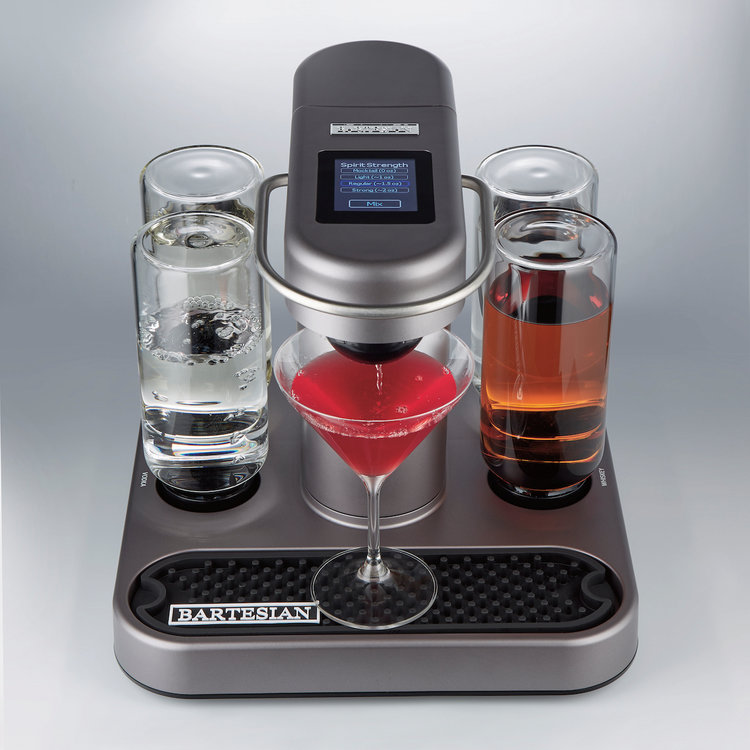

- #Cocktail for mac 10.3 mac os x#
- #Cocktail for mac 10.3 install#
- #Cocktail for mac 10.3 update#
- #Cocktail for mac 10.3 software#
One common explanation, for example, states, "You cannot install on this volume. The message, however, is not always very informative. Typically, a text message appears lower in the window, explaining the reason for the prohibition (see Figure 3.8, earlier in this chapter).
#Cocktail for mac 10.3 software#
The volume icon is displayed, but a Stop Sign symbol with an exclamation point overlaps the volume icon, indicating that you cannot install the software on that volume. The volume icon is displayed but dimmed, so it cannot be selected. The volume that you intended to use to install your selected software is not displayed. When installing software via the Installer utility, the Installer may launch successfully, but when you get to the Installer's Select a Destination pane, you may find one of the following problems: #Cocktail for mac 10.3 mac os x#
Reinstall the Installer application itself, either by extracting it from the Mac OS X package (via Pacifist) or from a backup of a working copy, or by reinstalling Mac OS X altogether. "Take Note: Adding or Deleting a User," in Chapter 2, for more information on creating and deleting additional users. Use Disk Utility's First Aid (or a similar third-party utility) to check whether disk repairs are needed. Disconnect all peripheral hardware devices, restart, and try the installation again. Do not attempt to perform any other actions on the Mac while the install is proceeding. In such cases, try the following until one works: Most likely, this will be a general issue that will occur no matter what software package file you attempt to use. If you're running Mac OS X from your hard drive rather than from a CD/DVD, you may find that the Installer application refuses to launch. If it still fails, especially if the Mac drops into Open Firmware, you probably have a damaged CD/DVD. "Kernel panic," in Chapter 5, for a description of a problem with a third-party video card that may occur when trying to install Mac OS X.Īfter doing all of this, try starting up from the disc again. Remove third-party hardware upgrades such as third-party memory (RAM) and third-party PCI cards. 
Disconnect peripheral devices connected to your computer except for the Apple keyboard and mouse, including USB devices, FireWire devices, SCSI devices, and PCMCIA cards.Check Apple's Web site for possible upgrades.
#Cocktail for mac 10.3 update#
Your computer may require a firmware update for best Mac OS X compatibility.
Make sure that current firmware is installed. Verify that the shiny side of the disc is relatively clean (no particles, smudges, or other abnormalities). Apple advises that you follow these steps if you're unable to start up from a Mac OS X Install disc: In any case, because starting up from the disc is a requirement for installing Mac OS X, you cannot ignore symptoms like those described above. At that point, check my Sad Macs book, the documentation that came with the drive, or Apple's support Web site for more help. If you don't have a clue what I'm talking about here, don't worry-unless you decide to install an internal CD or DVD drive and start having problems. Users have reported that drives in the slave position do not work in Mac OS X. In particular, the drive, which is an ATA device, should be set for the master position, not the slave mode position. Chapter 5 for more information on Open Firmware and on startup problems in general.īy the way, if you installed an internal CD or DVD drive, you need to be careful about its settings. Or you could borrow or buy an external CD drive and try that. In this case, if you were up to the task, you could reinstall the original CD drive and see if that worked. The drive worked in general but not for the Mac OS X Install CD. In one case, the culprit was a third-party CD-ROM drive that replaced the internal drive that came with the Mac. However, if the disc fails in some Macs but works in others, a defect is not the likely cause. Problems like these are often caused by defective discs. In the most extreme cases, the Mac drops into Open Firmware. (-2)." In other cases, the disc simply stalls at some point in the startup sequence, with or without displaying an error message. 
Some users are unable to get the Mac OS X Install disc to act as a startup disc for their Mac, getting the following error message instead: "Startup Disk was unable to select the install disc as the startup disk. The following covers most of the things that may go wrong, as well as what to do to get things right again. As with any OS, however, problems can occur. Most Mac OS X installations go quite smoothly. Learn More Buy Troubleshooting Tips and Hints: Installing Software







 0 kommentar(er)
0 kommentar(er)
